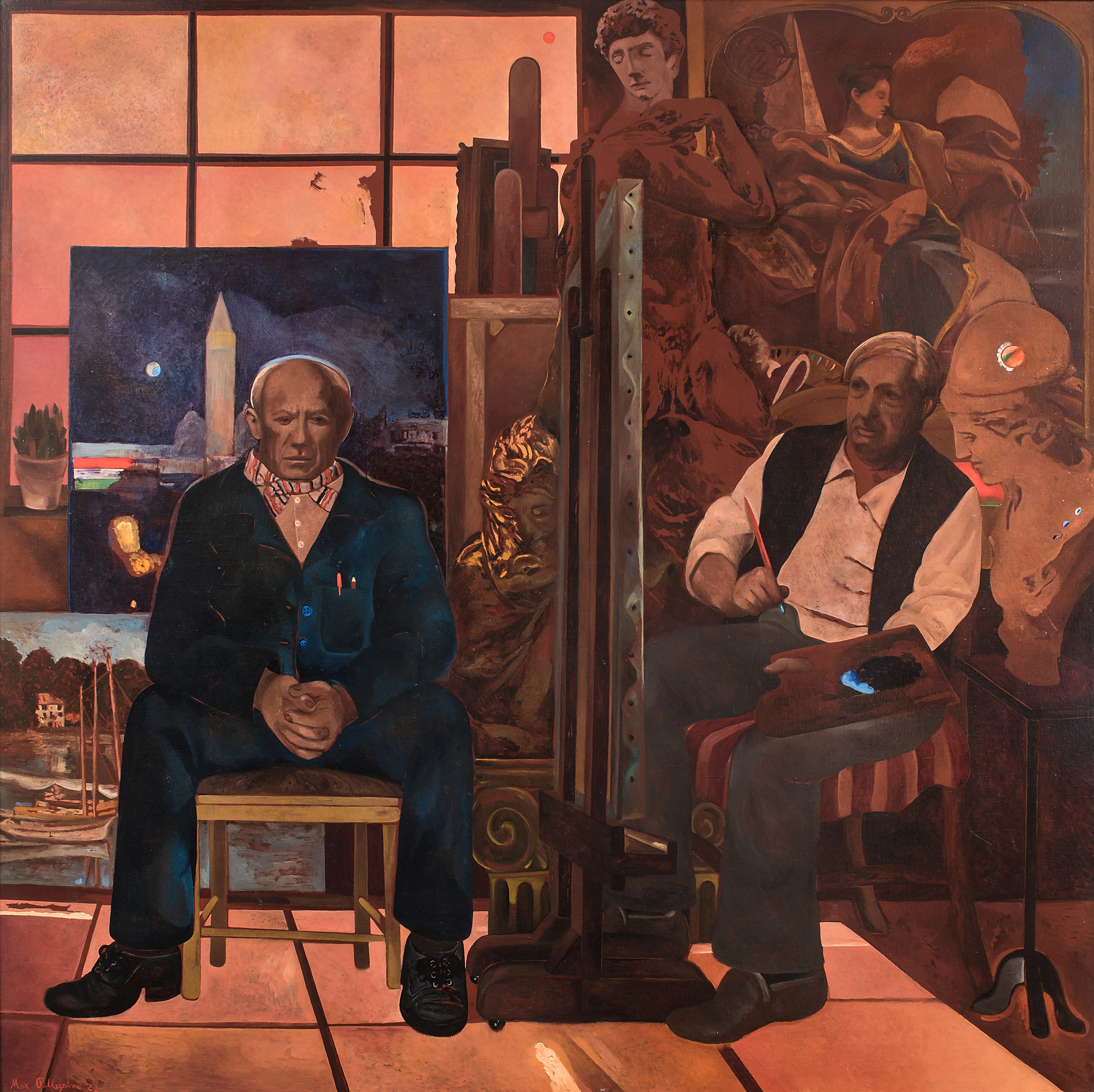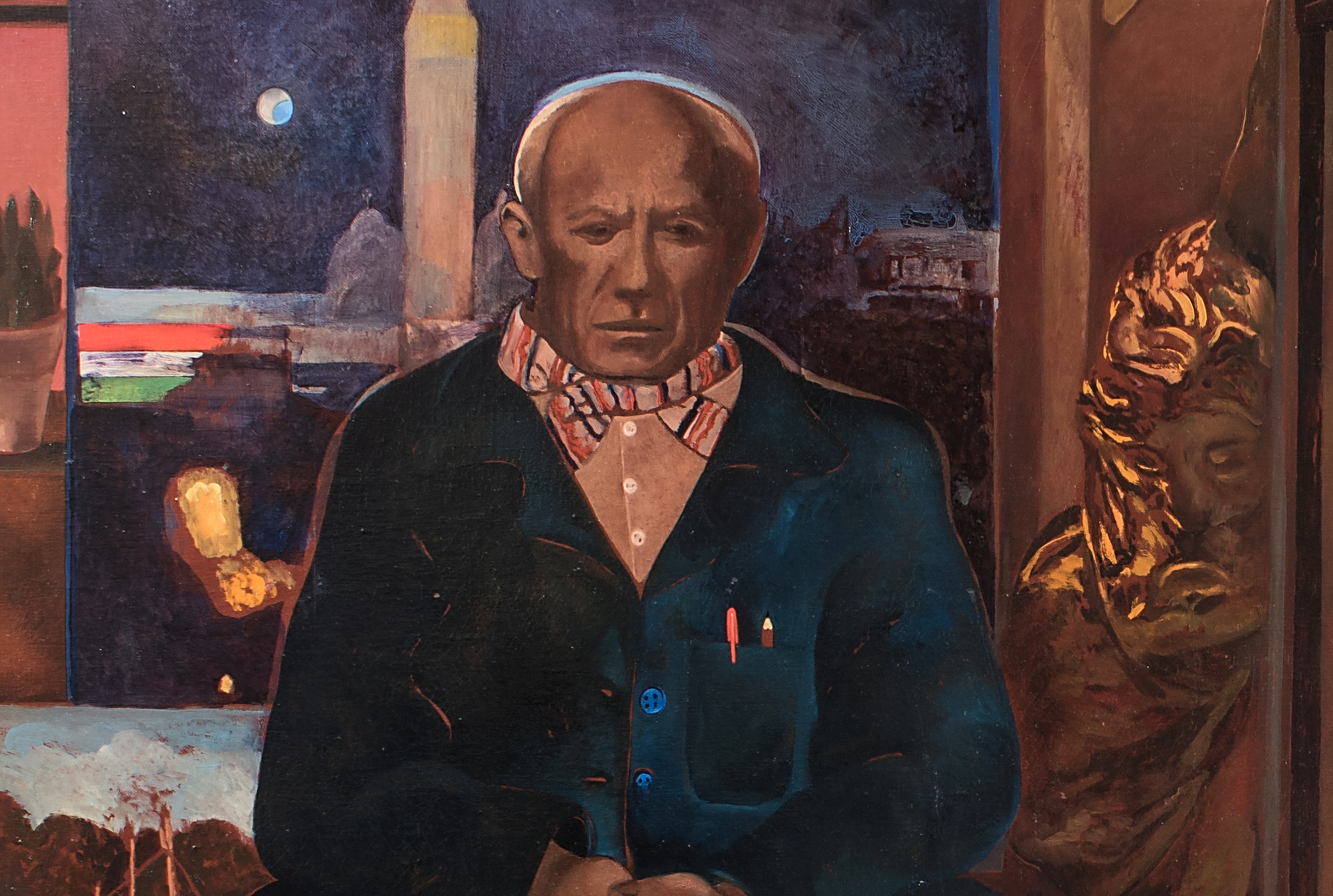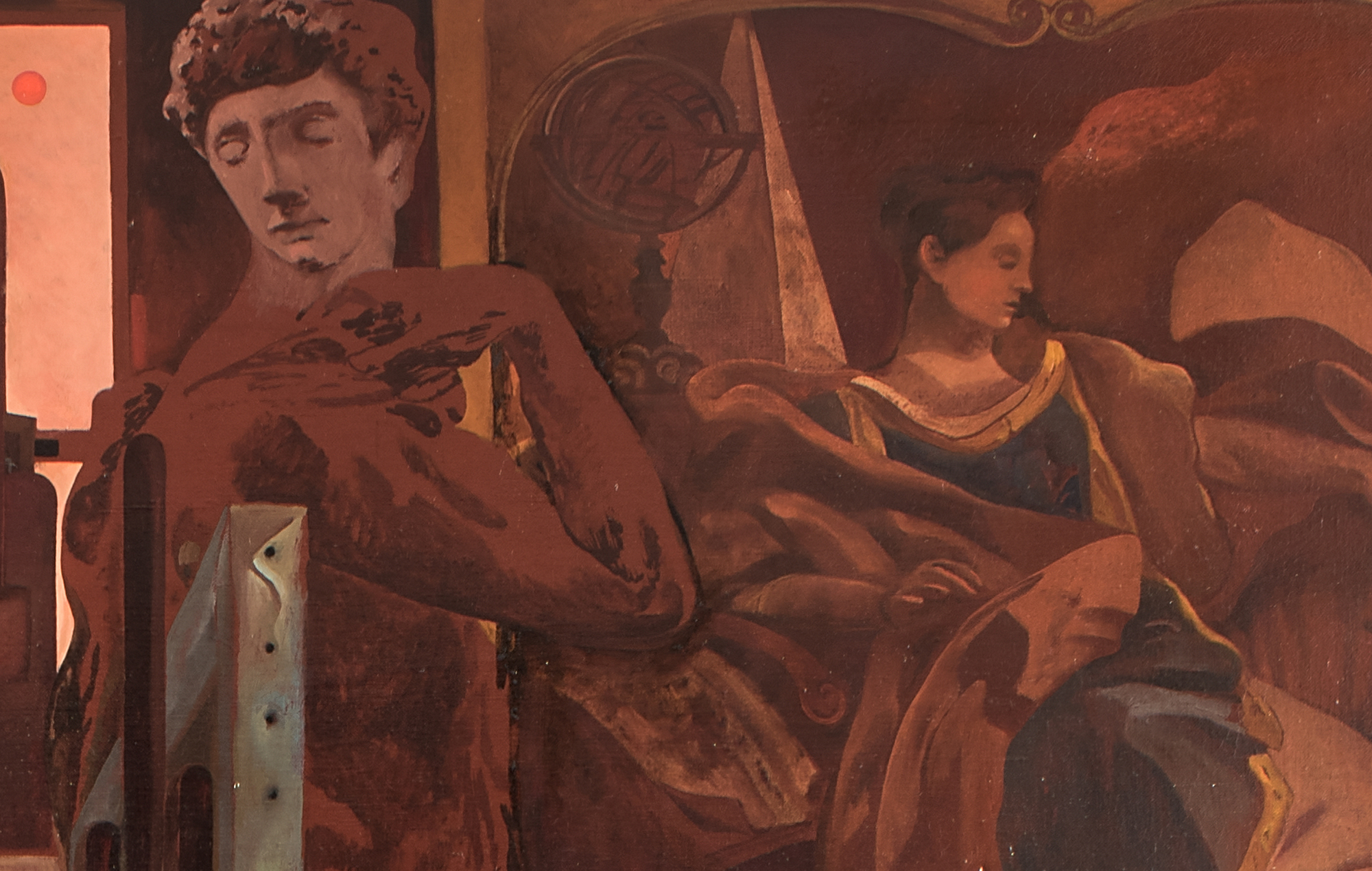MAX PELLEGRINI (n. 1945)



64,000
"Sí, la ironía es uno de los elementos de mi pintura. Me burlo de mí mismo y de mis miedos y fobias neuróticas y convierto la situación con detalles irónicos, si no hilarantes. Coloqué un gato, por ejemplo, con ojos fosforescentes en una escena bucólica, o en el tema del Carnaval mezclo muerte, ridiculización y bromas". (Antonio Monda, "Entrevista con Max Pellegrini", en Max Pellegrini, eds. Danilo Eccher, 2014


